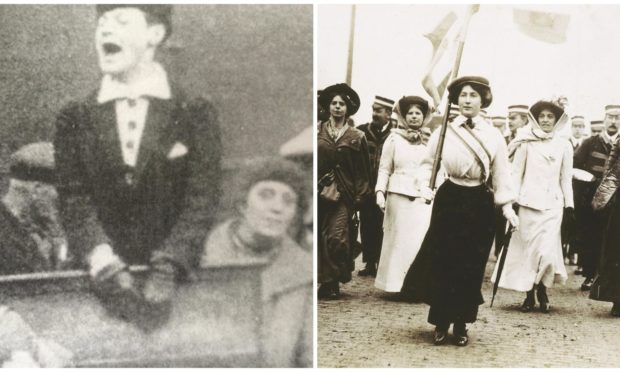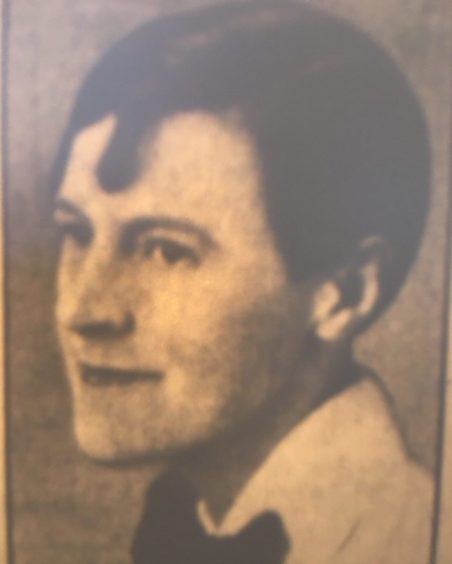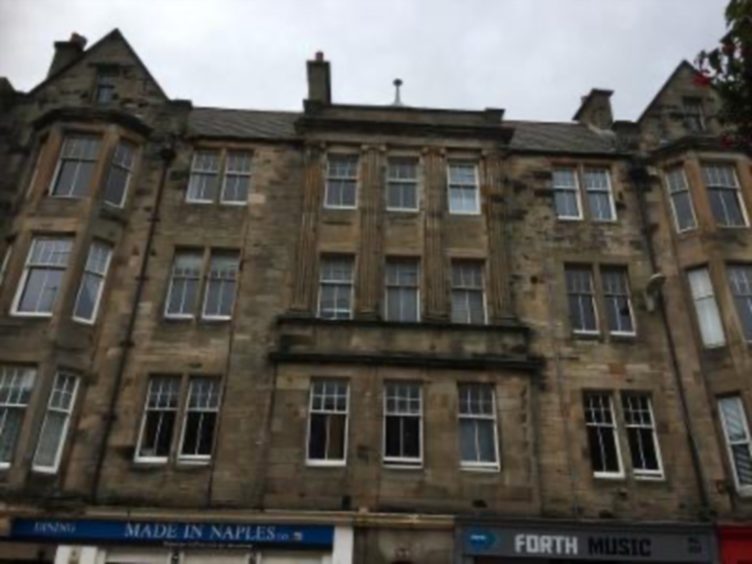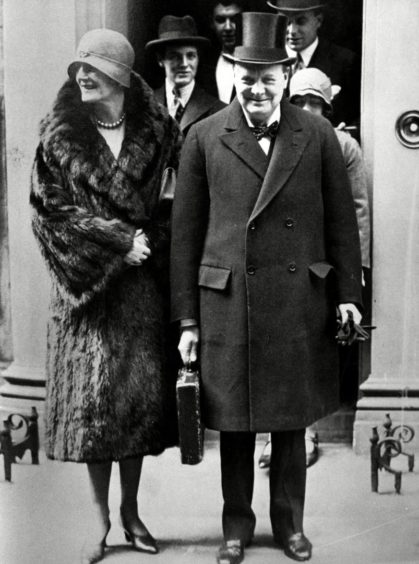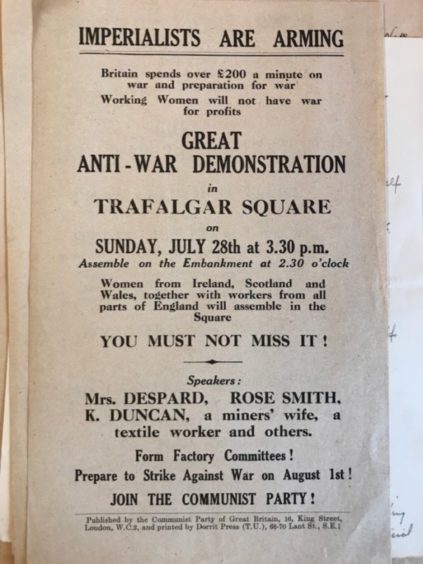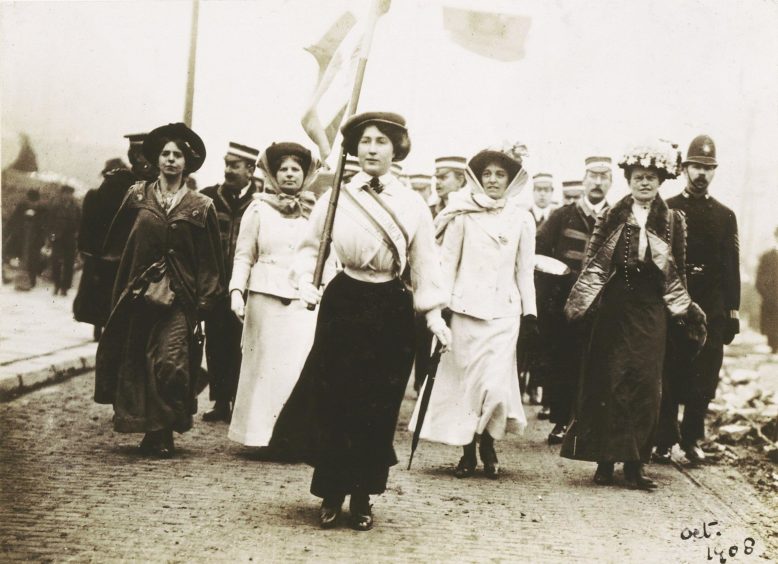An exciting new documentary aims to give unsung political heroine Kath Duncan from Fife the recognition she deserves. Gayle Ritchie finds out more.
With her striking red hair, bright blue eyes and dramatic clothing, Kath Duncan stood out from the crowd.
She was only 5ft 2in but, a powerful orator who “everyone was scared of”, she commanded attention wherever she went.
Born in 1889 in Tarbert, Argyll, Kath spent much of her childhood in Friockheim in Angus, but later moved to Kirkcaldy, which she always considered as her home.
A working class woman who hailed from a humble background, Kath fought for social equality, influenced some of Scotland’s most historic uprisings, formed an “extraordinary” friendship with Winston Churchill (and helped him win his by-election campaign in Dundee in 1917), and rubbed shoulders with suffragettes such as Emmeline Pankhurst.
But despite leading some of the biggest civil rights campaigns of the 20th century, very view people have heard of Kath Duncan today.
Indeed, her legacy seems to have been airbrushed right out of history.
Multi-award-winning filmmaker and activist Ray Barron-Woolford is on a mission to change that and see the fiery redhead recognised as a working class hero and a national treasure.
Based in Deptford in South East London, Ray has been obsessed with Kath’s life since he stumbled across an article about her online.
“It was the only one online at the time and while I would later discover it was inaccurate, it was interesting enough for me to spend five years researching Kath’s life,” he says.
Having already written a book, The Last Queen of Scotland, and a play, Liberty about Kath, Ray is now working on a documentary about the activist, with filming due to start in September.
The 63-year-old will take to the streets of Kirkcaldy, Friockheim, Edinburgh and London over the next few months, visiting the houses where Kath lived and strolling the streets on which she campaigned to recreate some of her most historic moments for today’s screens.
While researching his book and play, Ray had a huge amount of help from George Proudfoot of Kirkcaldy Civic Society, and social media enabled him to discover more local links.
“The aim is to get everyone talking about Kath Duncan,” he says.
“She was sent to jail twice for her activism and one of her jail sentences led to the first ever civil rights debate in the House of Commons, and the establishment of the National Council of Civil Liberties.
“She fought along with Emmeline Pankhurst, she was Clementine Churchill’s best friend, and she ran Churchill’s 1917 by-election campaign in Dundee, securing him a massive vote – but her name remains barely known.”
Kath led the 1920s hunger marches and the fight against Oswald Mosley’s fascists.
She took on slum landlords, rallied against gas price rises for the poor and, being a gay woman herself, has been hailed by Ray as “the mother of LGBTQ campaigns in the UK”.
Her rise to prominence began when she ran Churchill’s 1917 by-election campaign in Dundee which secured him a massive vote after he was appointed Minister of Munitions in David Lloyd George’s coalition government.
“The aim is to get everyone talking about Kath Duncan.”
RAY BARRON-WOOLFORD
Her connection with Churchill started after meeting Churchill’s wife-to-be, Clementine, in Edinburgh, where Kath attended the Karl Frobel School for a time.
The two forged a close bond, according to Ray, with the pair sharing a strong sense of social justice.
At the time of Churchill’s election campaign, Kath was living in a room in Kirkcaldy High Street and working at the town’s East Primary School, which is now a neighbourhood centre.
Her friendship with the cigar-puffing statesman was extraordinary, in Ray’s mind, as women from her class were not normally given such close contact. But helping him to win the vote won his respect.
Ray also reckons it’s thanks to Churchill that Kath, who left Scotland for London in 1924, had her two jail sentences cut.
She was jailed in December 1932, and again in 1934, after being prosecuted as a “disturber of the peace” and an “inciter of others to commit crimes and misdemeanours”.
Ray reckons there are a number of reasons why Kath is so little known.
“She’s been left in the shadows all these years despite the fact in the 1930s she was more famous than Wallis Simpson,” he says.
“She was LGBTQ and poor, being a primary school teacher, so there was no family wealth to secure her name in history.
“Also, she later gave her life to the Communist party – that’s still not cool – so that wouldn’t have helped.”
Kath’s father died when she was five years old and she was raised by her mother and sister in Fife.
“She won scholarships to school and St Andrews University (where she studied literature) as her mother was a seamstress whose skills kept the family out of the work house,” says Ray.
“In Dundee she became active in the suffragette movement. She became best friends with Clementine before she met Churchill. They both hated the Tories, calling them vulgar.
“In 1908 Kath was invited to their wedding, at a time when it was extremely rare for a poor woman to be invited to a society wedding.”
The injustice and brutality of the First World War, with injured soldiers having no jobs to return to, and mothers and children facing crippling poverty, shaped her politics, leading to her becoming a member of the Independent Labour party in Scotland.
In December 1923, she married fellow teacher Sandy Duncan in Kirkcaldy’s Carlton Tea Rooms with just two witnesses.
“By this time, Kath was famous and hugely popular and her mother dressed her in the clothes of Hollywood film stars,” says Ray.
“I believe her marriage to Sandy was one of convenience – to hide her sexuality.”
The couple moved to Hackney in London in 1924 to take on a hugely important role in shaping the women’s suffragette movement with Pankhurst, Daisy Lansbury, and the founders of the UK Communist Party.
“In London she dressed in the fashion of lesbians, with many reporters pointing out how she looked and what she wore but also adding the point… but she is married to Mr Duncan,” says Ray.
It was the General Strike of 1926 and the Invergordon Mutiny of 1931, whose leaders included her friend Fred Copeman, that would turn Kath from a Churchill-supporting Liberal to a committed member of the UK Communist Party that had been established in 1920.
In 1930, Kath, still teaching in Battersea, moved to Deptford in South East London and rapidly involved herself in The National Unemployed Workers Movement.
She was a key organiser of the hunger marches that defined the 1930s, and energetically opposed fascism. Wherever she went, crowds would gather, often in their thousands, to listen to this captivating orator and lover of amateur dramatics, who, despite her diminutive height, had no trouble attracting attention.
Rallying the unemployed and the poor, she mobilised her entire community to take on slum landlords, defend market traders from being moved away as part of gentrification plans of the time, and organised child protests against welfare reforms.
Throughout much of her life, Kath suffered from poor health and she returned to Kirkcaldy to live out her final years with her sister.
On August 14 1954 and at the age of 66, she died of tuberculosis in Stracathro Hospital in Angus.
She had spent time in the region while growing up – most of her childhood was enjoyed in Friockheim – and it was where her mother’s family came from. It’s thought she may have taken ill while visiting relatives there. She was cremated in Dundee.
In South London, thousands lined the streets to celebrate her life.
When a speaker asked the crowd to whom to propose the toast, a voice piped up “The Last Queen of Scotland!”
Since then she has largely been forgotten.
“Kath Duncan is the most important UK and Scottish civil rights leader of the past 100 years because no other man or woman was so actively involved at the leadership level in so many campaigns – hunger marches, fuel poverty, anti-fascist protests, the suffragette movement, LGBTQ, workers’ rights, civil rights… the list goes on and on,” says Ray.
“It shames me as a gay man that our community celebrates Pride but has yet to recognise Kath Duncan as the mother of the UK LGBTQ and civil rights movement.
“Scotland wants Independence. Should that not come with a commitment to those who gave their lives fighting for equality and civil rights?
“My film will celebrate all working class heroes, especially women who have been left in the shadows for far too long.
“It should encourage everyone to demand Kath Duncan gets the same recognition in her home town of Kirkcaldy as Adam Smith does.”
“It shames me as a gay man that our community celebrates Pride but has yet to recognise Kath Duncan as the mother of the UK LGBTQ and civil rights movement.”
RAY BARRON-WOOLFORD
Ray is keen to hear from anyone with stories or connections to Kath ahead of filming in autumn.
He intends launching the film globally via a series of film festivals in a bid to reach a global audience.
- Ray runs a food bank in Lewisham inspired by Kath called Kath’s Place which became the subject of his most recent award-winning documentary, Feeding Lewisham. Contact Ray via email at: raymondwoolford@aol.com
